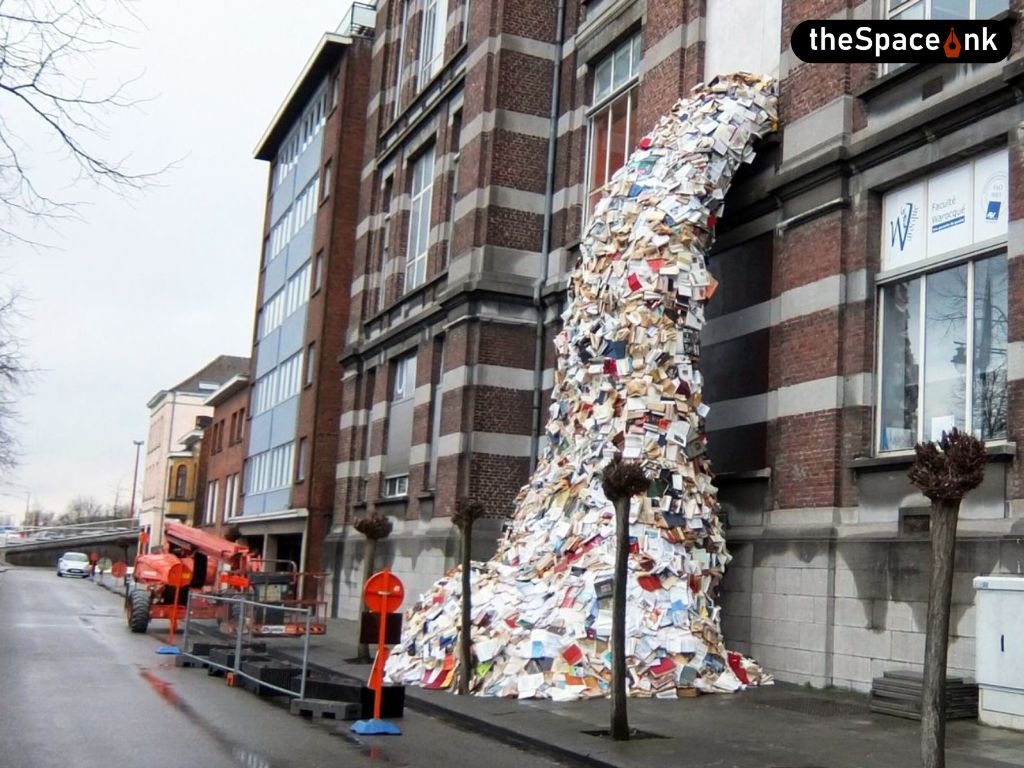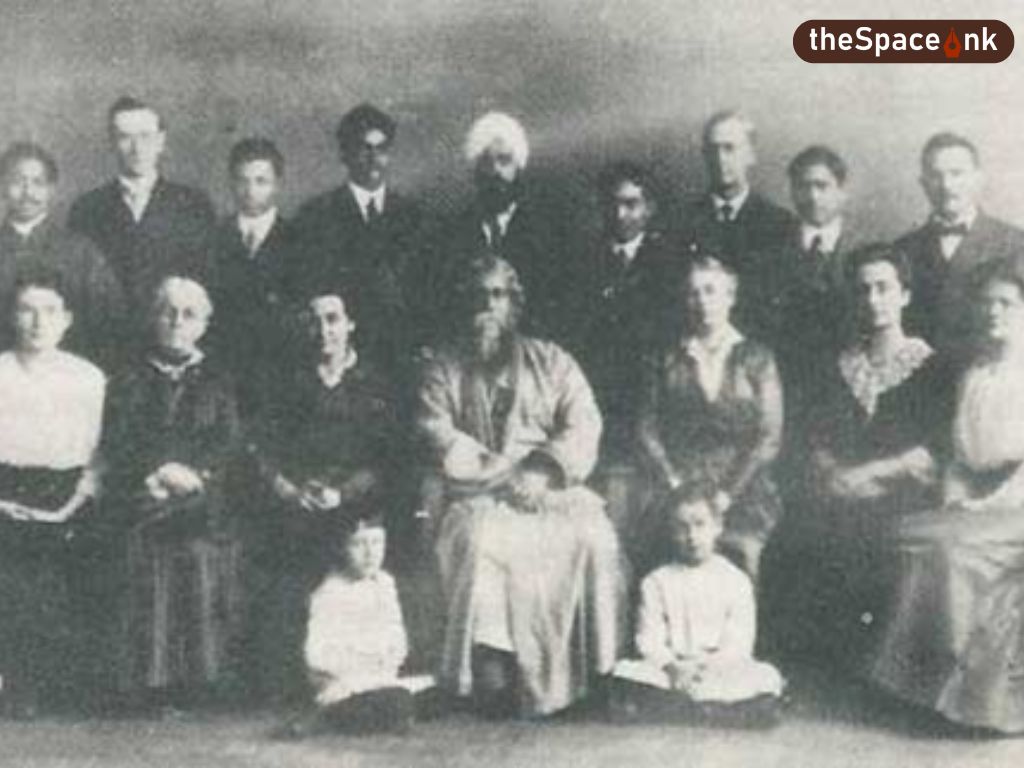(Book Sculpture)
Idiom stands far from alone. Around the world, artists have been reimagining books in startling, poetic ways — turning them into waterfalls, avalanches, forests, even creatures of myth. Take Alicia Martín in Spain, whose book torrents spill from windows in defiance of gravity and dust. One might stumble upon one of her sculptures and experience a fleeting moment of bewildered wonder, perhaps imagining that the local library had a rather violent sneeze.
Then there’s the enigmatic anonymous Scottish sculptor—still shrouded in delightful mystery—who, like a literary fairy godmother, left behind tiny, intricate paper sculptures in various libraries across Edinburgh. These delicate creations included a tree sprouting organically from the pages of a book (aptly named “Poetree”), a miniature cinema inviting silent stories, and even a fearsome, yet undeniably charming, paper dragon. Each one a secret gift, a whispered love letter to the enduring power of literature.
Also Read: Books That Burst Out of Windows and Spiral Into Infinity- Part 1
The impulse to transform the familiar form of the book into something unexpected clearly resonates with artists across the globe. Take, for instance, the profound reflections of Guy Laramée. His artistic practice, as eloquently stated, grapples with the “erosion of cultures” and the perceived obsolescence of the physical book in our increasingly digital age. Laramée doesn’t merely reshape books; he carves landscapes from them, transforming stacks of disused knowledge into mountains, hills, and fields. (Book Sculpture)
His work poignantly suggests that ultimate knowledge might be found not in accumulation, but in return to a primal state, where the book, stripped of its textual content, becomes a silent testament to the cyclical nature of culture and the enduring power of the physical world. His fog-laden, cloud-obscured bookscapes invite us to contemplate the “thick cloud of unknowing” that lies beyond the grasp of intellect. (Book Sculpture)
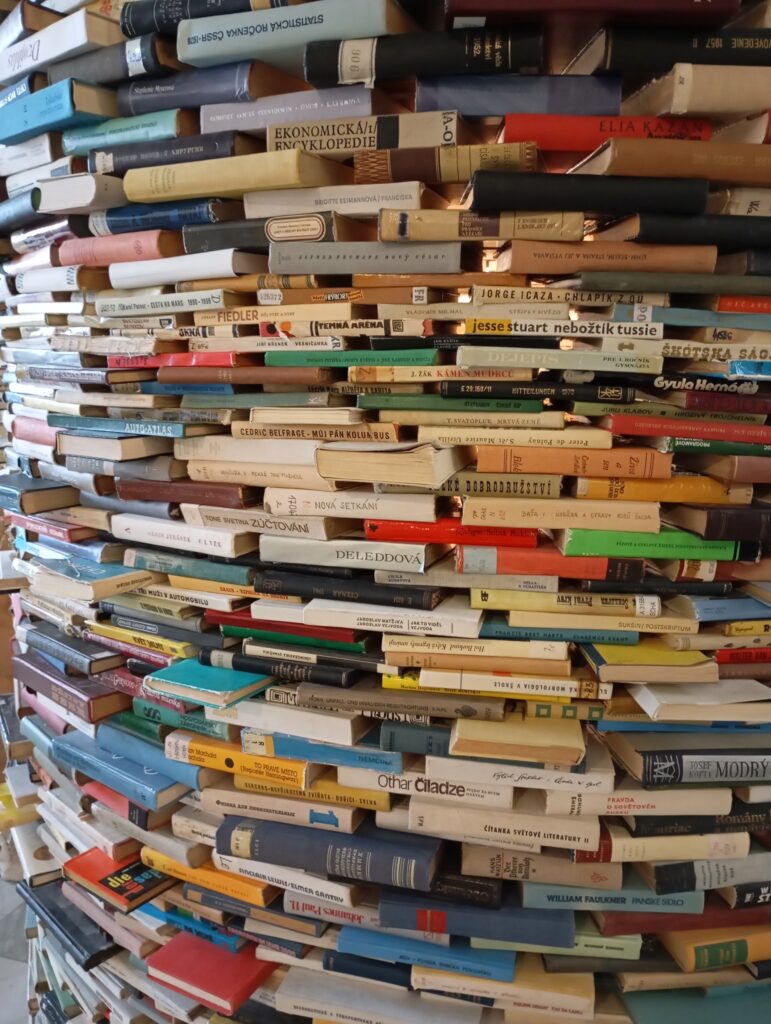
In stark contrast, the intricate and subtractive work of Brian Dettmer offers a different perspective on transforming the book. Dettmer, widely recognized as a leading figure in contemporary book art, meticulously excavates existing books, revealing hidden narratives and creating stunningly complex sculptural forms. His process is one of careful removal, peeling back layers of printed information to expose unexpected juxtapositions of text and image. Dettmer’s sculptures, held in prestigious collections worldwide, invite viewers to reconsider the linear nature of reading and to discover new meanings within the deconstructed remnants of the printed page. (Book Sculpture)
“Book sculptures, in their intriguing existence, occupy the fascinating intersection of reverence and rebellion. They simultaneously honor the book as a physical object, a vessel of knowledge and stories, while audaciously defying its conventional purpose.”
Then there is the captivating work of Su Blackwell, whose delicate book sculptures often evoke a sense of fairytale and quiet wonder. Blackwell carefully cuts and manipulates the pages of books to create intricate three-dimensional scenes that seem to leap from the very stories they once contained. Her work often features dreamlike imagery, blurring the lines between the tangible reality of the book and the imaginative worlds held within its pages. (Book Sculpture)
Also Read: The Butcher Who Taught a Monk
Finally, the enigmatic artistry of Robert The also deserves mention in this exploration of bookish reinvention. Operating with a captivating blend of precision and playful subversion, Robert The creates intricate and often humorous sculptures from discarded books. His work frequently involves transforming books into unexpected (a book gun for example) objects and scenes, injecting a sense of wit and irony into the repurposing process. (Book Sculpture)
Book sculptures, in their intriguing existence, occupy the fascinating intersection of reverence and rebellion. They simultaneously honor the book as a physical object, a vessel of knowledge and stories, while audaciously defying its conventional purpose. And often, these artistic transformations involve books that might otherwise face a less glamorous fate: pulped into oblivion, relegated to dusty discard piles, or simply forgotten in the relentless march of time and new publications. (Book Sculpture)
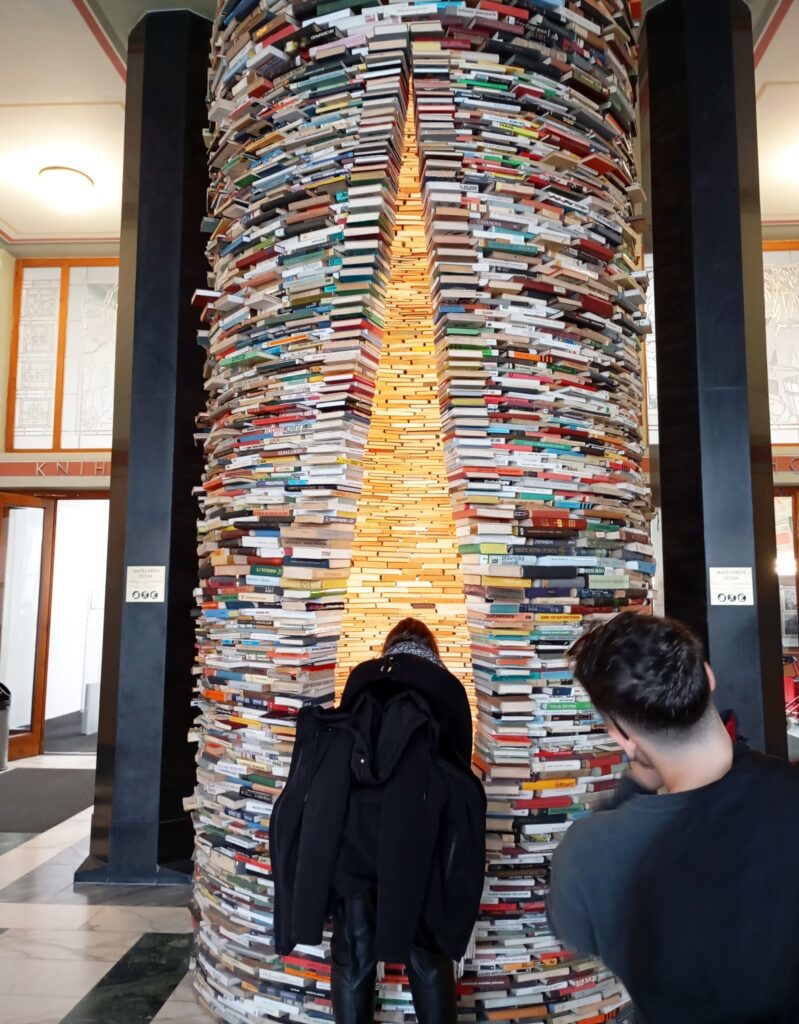
Libraries, in their constant curation and evolution, deaccession thousands upon thousands of volumes each year — books deemed damaged, outdated, or simply no longer fitting within the ever-evolving constraints of shelf space. What could be a more poetic second act than to be reborn as art, to transcend the limitations of their original form and spark new conversations? (Book Sculpture)
“Personally, I find that Idiom, that spiraling tunnel of textual infinity, serves as a perfect metaphor for the very act of reading itself.”
Of course, not everyone is immediately convinced by this artistic repurposing. To some purists, the act of altering a book, of cutting and shaping its pages, feels akin to a form of literary vandalism, a desecration of something sacred. But then again, so too was the act of scribbling notes in the margins considered a transgression, until it evolved into a recognized form of intellectual dialogue, a conversation across time. Similarly, the seemingly disruptive act of collage was once on the fringes, until it blossomed into a significant artistic movement.
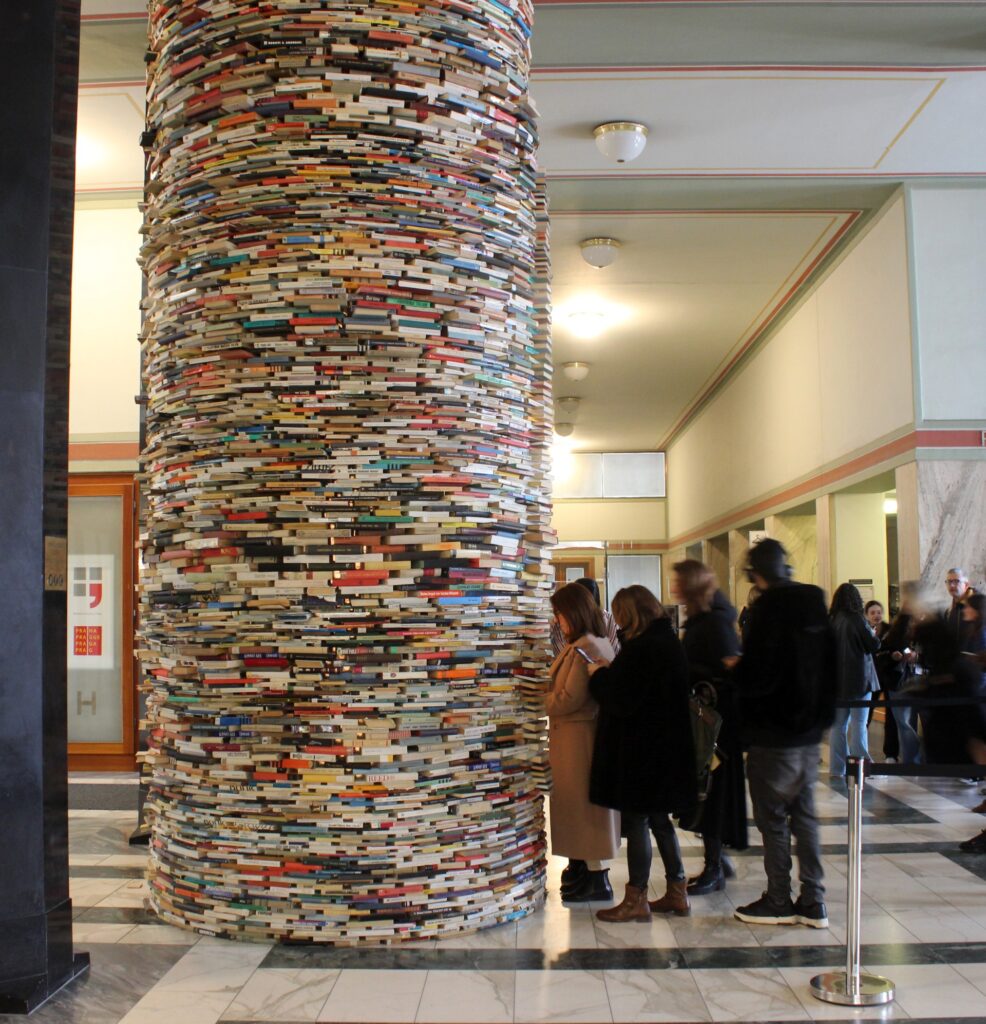
Personally, I find that Idiom, that spiraling tunnel of textual infinity, serves as a perfect metaphor for the very act of reading itself. You enter a book, and you willingly allow yourself to fall, spiraling downwards into a world with no immediately visible end. You lose yourself within its pages, surrendering to the rhythm of the narrative. You rarely know precisely what awaits you around the next bend, what revelations or twists will unfold. It’s both a tunnel leading you deeper and a mirror reflecting your own thoughts and emotions. It can be disorienting, utterly thrilling, and, let’s be honest, sometimes just a little bit absurd. (Book Sculpture)
Also Read: The Disappearance of Agatha Christie: A Mystery More Intriguing Than Her Novels
Standing there in the quiet hum of the Prague municipal library, gazing into that bookish vortex, I wasn’t dwelling on the notion of “waste.” Instead, my thoughts drifted towards the elusive nature of time, and how the words we once read, the stories that once captivated us, still linger somewhere within the labyrinth of our minds, shaping who we are. And perhaps this is what we do with the past, with the accumulated weight of stories and knowledge: we stack it up, we shape it into something new and beautiful, and we invite others to peer in, to ponder, and to perhaps, lose themselves for a moment in the dizzying spiral of it all.
Books don’t die when they’re unread. They die when they’re forgotten.
So, if a sculpture helps us remember, helps us feel something — curious, nostalgic, emotional — then maybe that’s not desecration.
Maybe it’s resurrection. Or better yet: reincarnation.
And for this, perhaps we need a better light.
Photo Courtesy: Author, Arts In the City.Com
Pijus Ash is a freelance journalist with over two decades of experience. An avid reader by nature, he likes to pursue independent research. In addition to his passion for reading, Pijus enjoys traveling and frequently embarks on backpacking.


